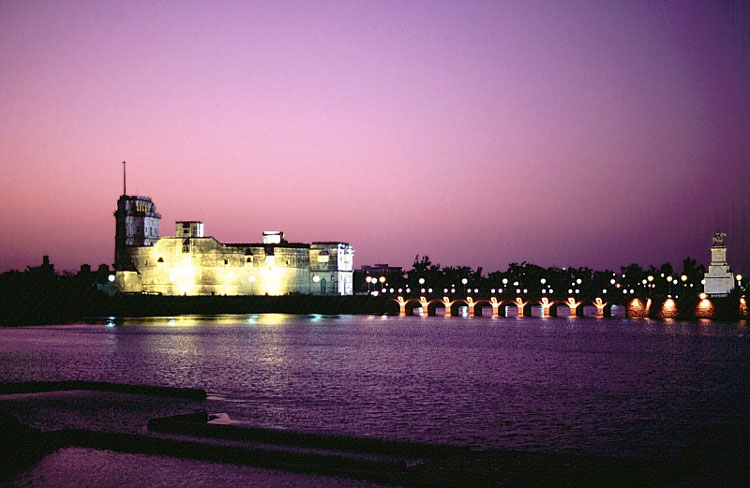Jamnagar is a city located on the western coast of India in the state of Gujarat in Saurashtra region. It is the administrative headquarters of the Jamnagar District. Jamnagar is the largest city on the westernmost side of India and is the fifth largest city of Gujarat state after Ahmedabad, Surat, Vadodara and Rajkot.
The modern look of the city was initially given by Shree Jam Ranjit, who actual built the city with all the modern infrastructure of that era was done during his reign during 1920s, the city was thereafter substantially developed by Jam Saheb Shri Digvijaysinhji Ranjitsinhji in the 1940s, when it was part of the Princely state of Nawanagar. The city lies just to the south of the Gulf of Kutch, some 337 kilometres (209 miles) west of the state capital, Gandhinagar.
India's largest private petroleum company, Reliance Industries, has established the world's largest oil refinery near the village of Moti Khavdi in Jamnagar district.The Essar Oil refinery is located in the nearby town of Vadinar.
History
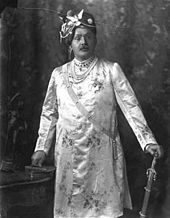
Nawanagar Nawanagar was founded by Jam Rawal in 1540 as the capital of the eponymous Princely state.Jamnagar, historically
known as Nawanagar (the new town), was one of the most important and the largest Princely states of the Jadejas in the
Saurashtra region. It was a 13 gun salute state. According to Pauranik literature, Lord Krishna established his kingdom
at Dwarka town in Jamnagar district, after migrating from Mathura, and accordingly, it is to the Yadava race that the
Jams of Nawanagar trace their ancestry.
Jamnagar has a hot semi-arid climate. There are three defined seasons. The "hot" season lasts from March to
May and is extremely hot and humid, before giving way to the "wet" season with extremely erratic monsoonal rainfall that
averages around 630 millimetres (25 in) but has varied from less than 100 millimetres (3.9 in) in 1911 and 1939 to over
1,500 millimetres (59.1 in) for the district in 2010.Tropical cyclones sometimes affect the region during this
period. The "cool" season from October to February remains hot during the day but has negligible rainfall, low humidity
and cool nights, so it is by far the most comfortable time of year.
The Jamnagar Municipal Corporation runs local buses in the city. Also auto rickshaws are available everywhere. Recently,
Ola Cabs has started its operations here along with Taxi for Sure.
The Marine National Park of Jamnagar is recorded as the first marine sanctuary of India. It consists of an archipelago of
42 islands, renowned for their mangroves and coral reefs. The whole forest is enriched with various marine lives. The
visitors can see fin-less porpoises, dolphins, sea turtles and a variety of colourful tropical fish at this place. The
site is also a retreat of an array of birds.
This temple is situated in the eastern part of Jamnagar, which marks the gateway to the city and it is also close to
Darbargadh in old city area. The temple is dedicated to the Kuldevi of the Jadeja clan of Rajput, who ruled this place.
The only marine national park in India is located at Jamnagar in Gujarat. It spans an area of around 3.0 square km. of
Island. The island is covered with marine trees and dense mangrove forest. The entire forest and island is enriched with
exotic marine creatures, wild life and sea animals. Tourists can find varieties of crabs in the region like neptune crab,
wolf crab, king crab, hermit crabs, ghost crabs etc.
Bet Dwarka was also known by the name of Bet Shankhodar, which was a major port before the development of Okha Port. It
was the abode of Lord Krishnas Queens. In the temple of the Bet, the deities of the queen such as Lakshmiji, Radhaji,
Jambuvantiji and Satyabhamaji are mainly found here.
Lakhota Fort a small palace, which was once owned by the Maharaja of Nawanagar, is located on an island in the heart of
the Lakhota Lake. This palace with a fort like appearance has semi-circular bastions, turrets, a pavilion housing
guardrooms displaying swords, powder flasks and musket loops. There is an arched stone-bridge, which connects the
Lakhota Palace with the town. Presently, it also houses a small museum. This fort museum displays a collection of
sculptures belonging to the 9th to 18th century. The museum is accessible by a jetty from the northern side of Ranmal
Lake which is a short journey. It is open to common public on all days except on Wednesdays.
This temple dedicated to Harsidhi Mataji in nestled at the top and bottom of the Koyla Hill. The temple built on the top
of the Koyla Hill is the ancient one, which resembles the construction pattern of the Navlakha Temple of the Chalukya
Dynasty in Ghumali. However, the temple at the foothill is quite modern-built. Harsidhi Mataji is also called by the
name of Ambica Mataji and Kalki Mataji. The local folk call her by the name of Harshad Mata.
The Bala Hanuman Temple is located on the south-eastern side of Ranmal Lake. The temple is remarkable for the incessant
24-hour chanting of the mantra ‘Sri Ram, Jai Ram, Jai Jai Ram’, since August 1, 1964. This dedication has earned Bala
Hanuman Temple a position in the Guinness Book of Records. The temple is visited by thousands of worshippers every year.
The ideal time to visit the temple is early evening.
According to historical records, Bahadurshah, the emperor of Gujarat, bestowed upon Jam Lakhaji twelve villages in
recognition of his role in the siege of Pawagadh. Jam Lakhaji, however, was killed by his cousins, Tamachi Deda and Jam
Hamirji Jadeja, after he took possession of the villages. His son, Jam Rawal, thereafter murdered his father's killers
and became ruler of Cutch.
Hamirji's two sons Khengarji and Sahibji fled to Delhi to pay obeisance to the Mughal Emperor Humayun. During a lion
hunt, the two brothers saved the Emperor from being killed by a lion. As a reward for their valor, an army was sent with
them to regain their kingdom. When Jam Sri Rawalji heard of the two princes coming back to the Kutch with the imperial
army, he prepared for battle.
Jam Sri Rawalji and his entourage marched out of Cutch, attacked and killed Tamachi deda, the main conspirator in the
killing of his father, and conquered the town of Amran and its dependencies. Jam Sri Rawalji bestowed the rule of Dhrol
province on his younger brother Hardholji, who was later killed in battle at Mithoi near Khambhalia, whereupon the throne
passed on to his eldest son, Jasoji. Jam hri Rawalji conquered parts of Saurashtra and formed his kingdom with 999
villages named it as Halar.
Once on a hunting trip in present-day Jamnagar, a hare was found to be brave enough to turn on the hunting dogs and put
them to flight. Deeply impressed by this, Jam Sri Rawalji thought that if this land could breed such hares, the men born
here would be superior to other men, and accordingly he made this place his capital.
On the seventh day of the bright half of the month of Shrawan, V.S. 1956 (August 1540) on the banks of the rivers
Rangmati and Nagmati, he laid the foundation of his new capital and named it Nawanagar (new town), which after few
centuries came to be known as Jamnagar, meaning the town of the JAM's.
Climate
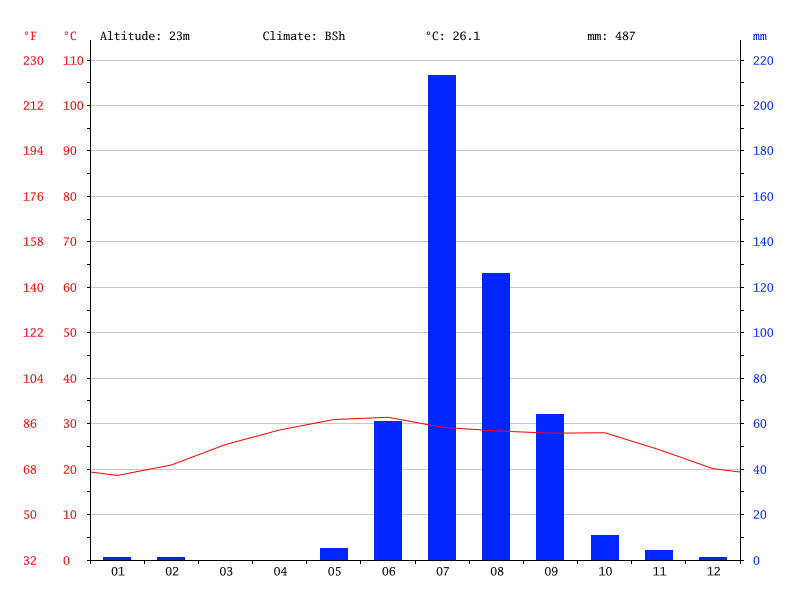
The highest recorded temperature was 47 °C (117 °F) on May 5, 1990, while the lowest recorded temperature was 1 °C (34 °F)
on February 5, 1984.
Culture
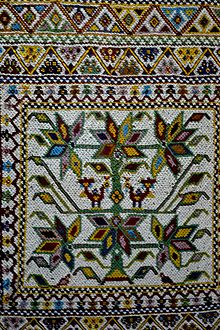
Most residents of Jamnagar are Gujarati and speak the Gujarati language. A small portion of the population speak the
Kutchi language, which is written in the Gujarati script but not mutually intelligible with Gujarati. The Kathiawadi
language (which is a colloquial dialect of Gujarati) is widely used for day-to-day communication. Major communities
include the Jadeja, Charan(Gadhvi), Satvaras (Dalvadis), Ahirs Sagars,(Yadav), Patels, Bhanushalis, Rajputs, Mers, Jains,
Lohanas, Brahmins, Bhoi(Bhoiraj) and Vaghers (Muslim and Hindu), and Khavas (Sorathiya Rajput).
The Marine National Park, the only marine sanctuary in India, is near Jamnagar, on the coral reef island of Pirotan.
Jamnagar is well known for its four marble Jain temples: Vardhman Shah's Temple, Raisi Shah's Temple, Sheth's Temple, and
Vasupujya Swami's Temple; all built between 1574 and 1622.The Bala Hanuman Temple in Jamnagar is also very famous
and is listed in The Guinness Book of World Records for the longest continuous chanting of "Ram Dhun"
(since 1 August 1964). Also in the Guinness Book of Records is the world's largest Rotla, which weighed 63.99 kg
(141 lb 1 oz) and was made by the Shree Jalarm Mandir Jirnodhar Samitee organisation at the Jalaram Temple, Jamnagar, on
15 January 2005.Jamnagar is popularly known as "Chhoti Kashi" due to many temples in the city and as people are
inclined to spirituality and to diversified religions. There are 5 Gita Vithyalaya's branches founded by Acharya Shri
Manharlalji Maharajshri, preaching Shri Mad Bhagvad Gita, Ramayana etc. to 8 to 18 years children concentrating on
balanced physical and mental development of Children. Dr. Kishorbhai Dave, who got his doctorate in Philosophy of Gita is
the main personality behind whole this 60 years long old activities.
Transportation
Airport
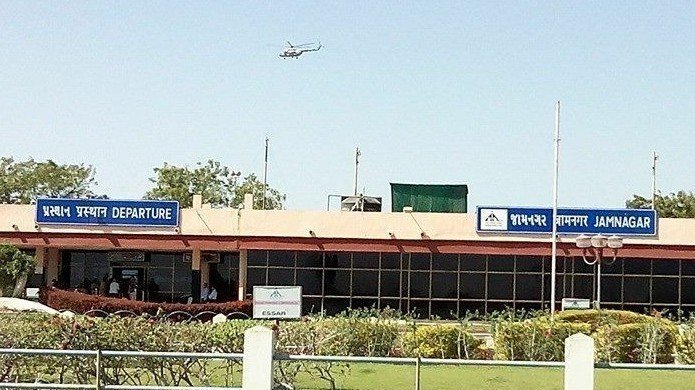
The city has an airport with a daily direct flight to Mumbai (Bombay) . The airport is a military enclave of the Indian
Air force which allows commercial flights.
Rail

Jamnagar has a railway station connected with a variety of destinations across India.Jamnagar has 4 daily trains to
Mumbai and weekly trains to the major cities of north, east and south of country.
Road
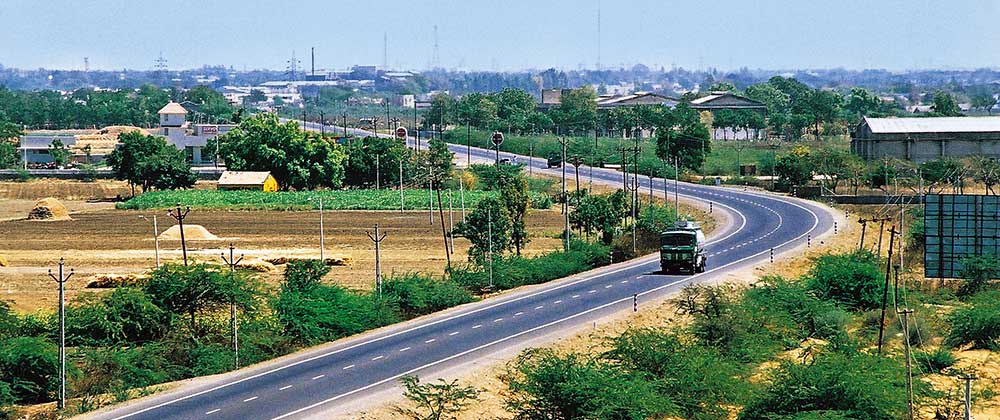
There are many Private bus service providers with coaches running between Jamnagar and Bhuj, Ahmedabad, Surat, Vadodara,
Mumbai, Pune many other major cities of Gujarat and other states as well. Apart from private bus services, State
Transport has bus services to almost all cities of Gujarat State & inter state transport facilities as well.
Local
Tourists Places in Jamnagar

Marine National Park

Mota Ashapura Maa Temple
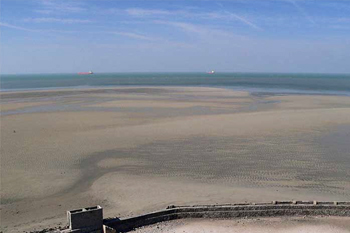
Pirotan Island
A few exotic species like scorpions, squid, wiper-isosceles, sea snakes, sea bonellia, sea warm sabella, coaster cather
and sea slugs are also found in plenty in this mangrove forest. Various types of corals like moon coral, star coral,
brain coral and finger coral etc, are also spotted.
Certain species of fishes like puffer fish, ray fish, lobster fish, brittle star, coral fish, pistol shrimp etc. with
more than 250 species are also found here. The forest is also a heaven for bird watchers, as the forest offers shelter
to flamingo, cranes, sea gull, haring gull, blackhead gull, crab plover gull, puffin and many other birds.
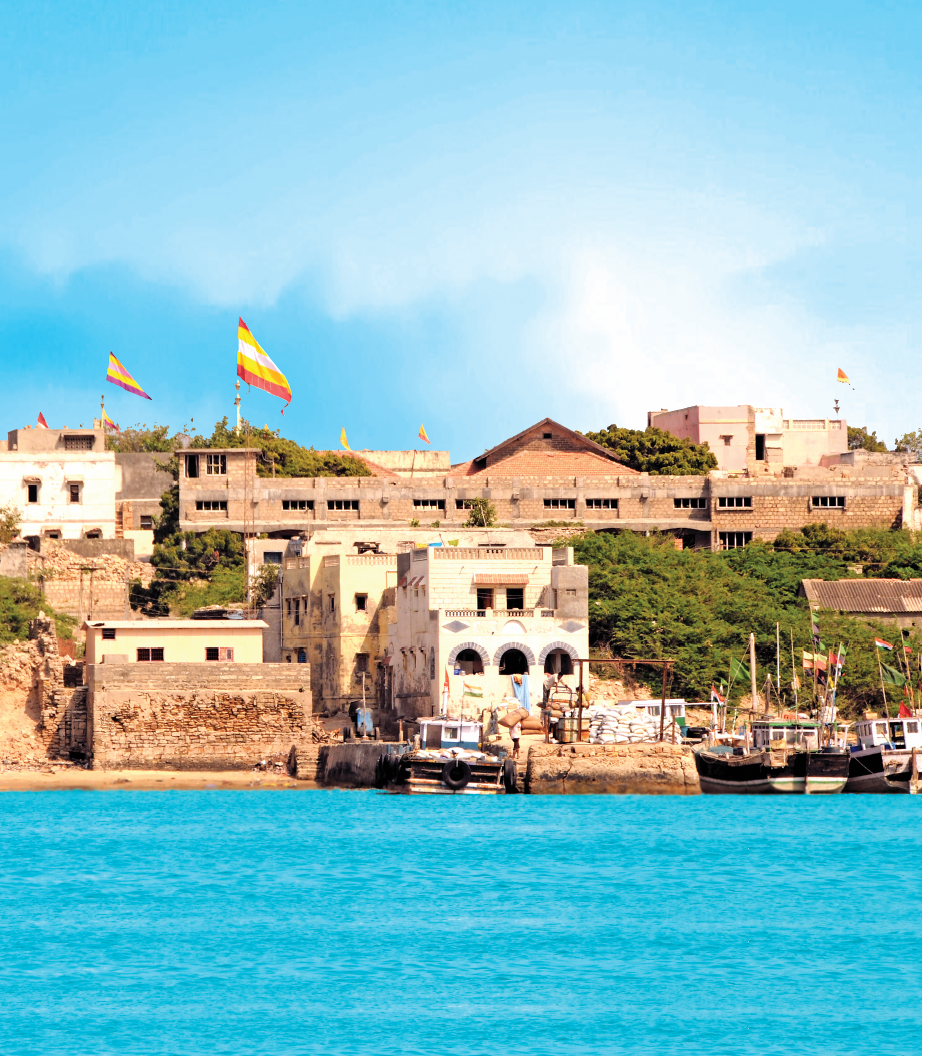
Bet Dwarka
On the island, there are 20 Vaishnav Temples, 23 Shivalayas, 9 Hanuman Temples, 6 Devi temples and many other temples.
It is believed that the Old Shankhnarayan temple was built around V.S 1774. Shrimad Vallabhacharyaji in V.S 1535
established the Mahaprabhuji Baithak here. Bet Dwarka is located at a distance of 3 km from Okha Port by sea.
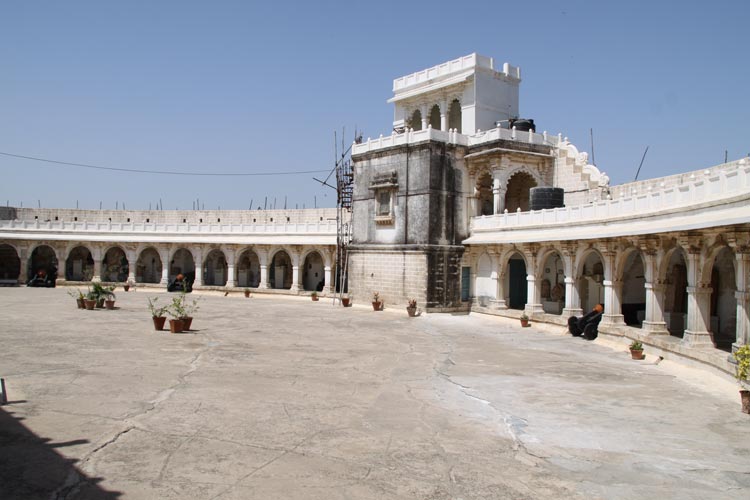
Lakhota Fort
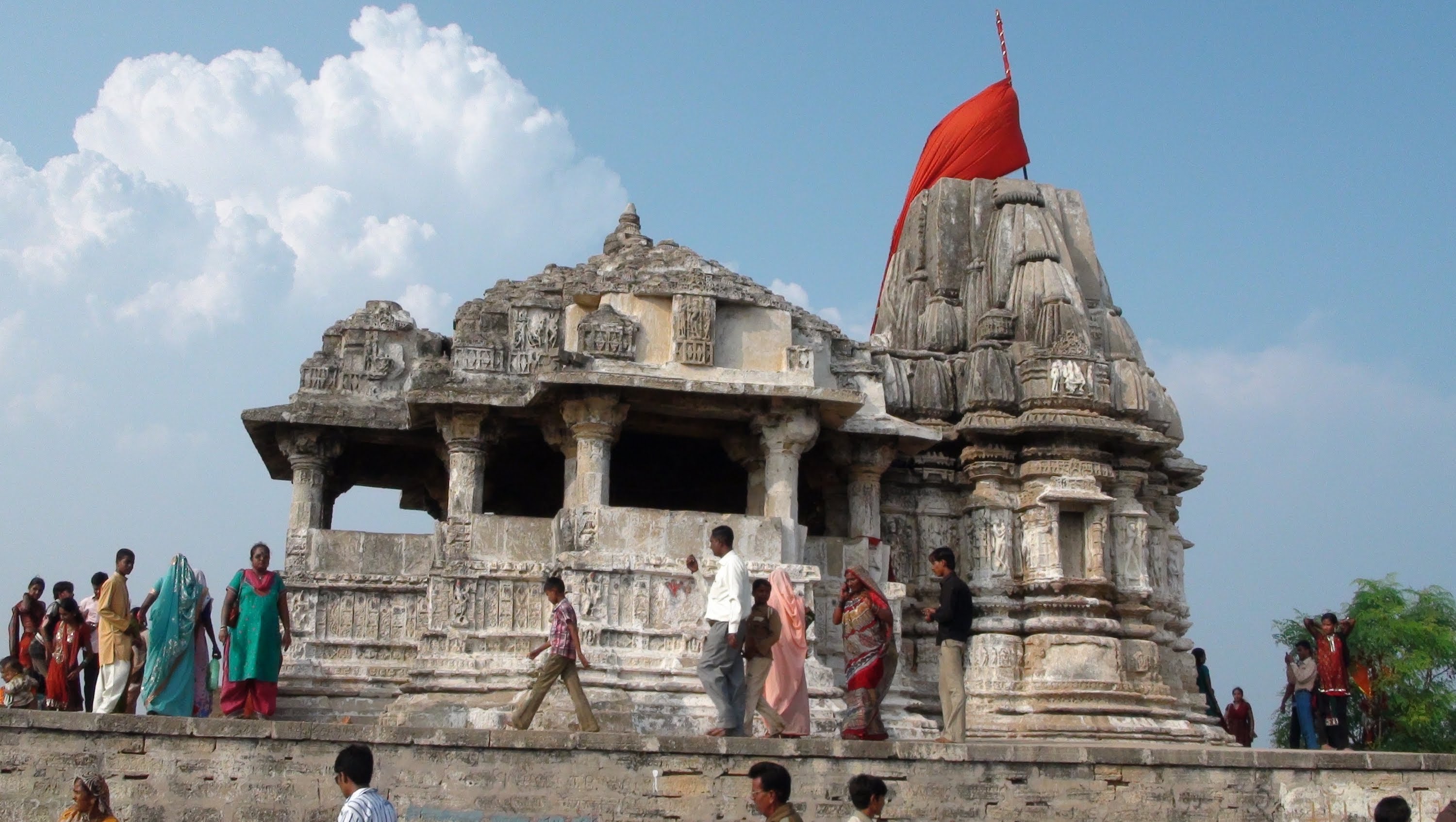
Harshidhi Temple
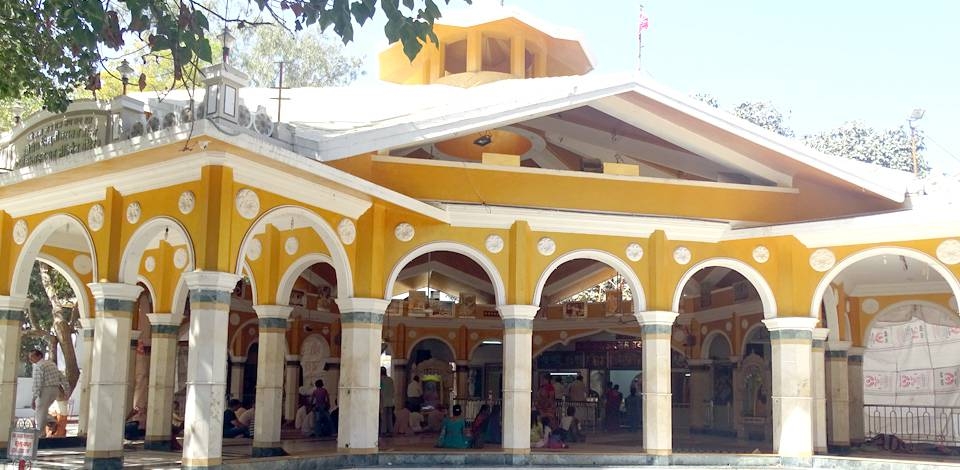
Bala Hanuman Temple
Food
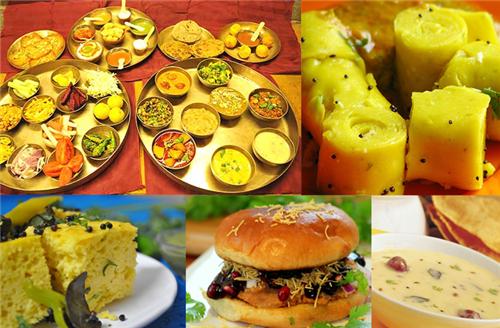
Just like people in other parts of Gujarat, people of Jamnagar also fall in the category of 'foodies'. Prime attraction
for the tourists is the 'Jamnagari Mukhvaas' and the special 'Dry fruit Kachori'.For those who have a sweet tooth,
the city is no disappointment to you too since there are number of milk and dry fruit sweets shops famous for their
respective specialities. For the street food lovers, the streets of Patel Colony will serve as a perfect delight to you;
serving all sorts of Indian cuisines including chaats, Chinese, South-Indian, Ice-creams, and much more. Also, for the
sophisticated ones there are a good number of hotels and restaurants across the city to fill up your tummies with
multiple cuisines. Apart from local restaurants, the city houses franchises of chains like Subway, Domino's and others.
Starting up the mornings with 'jalebi-fafda and papaya sambharo' and ending the day with a 'Heera - Moti icecream' from
Ram dairy seems like a perfect 'Jamnagiri' lifestyle.
Media and Communication

Daily local as well as national newspapers are available in Jamnagar in multiple languages such as The Times of India,
Economic Times, Indian Express, and Business Standard. Local newspapers include Nobat, Bhoomi, Khabar, Aajkaal, Lokwat,
The Princely State. All India Radio Airs at 100.1 MHz. Various cable operators like GTPL are available along with DTH
services from Tata Sky, Airtel, DishTV, Videocon D2H. Broadband services are provided by the BSNL. Reliance has started
its 4G service, Reliance Jio. All mobile operators including Vodafone, Airtel, Idea, Reliance, BSNL, Tata Docomo are
available in Jamnagar.
